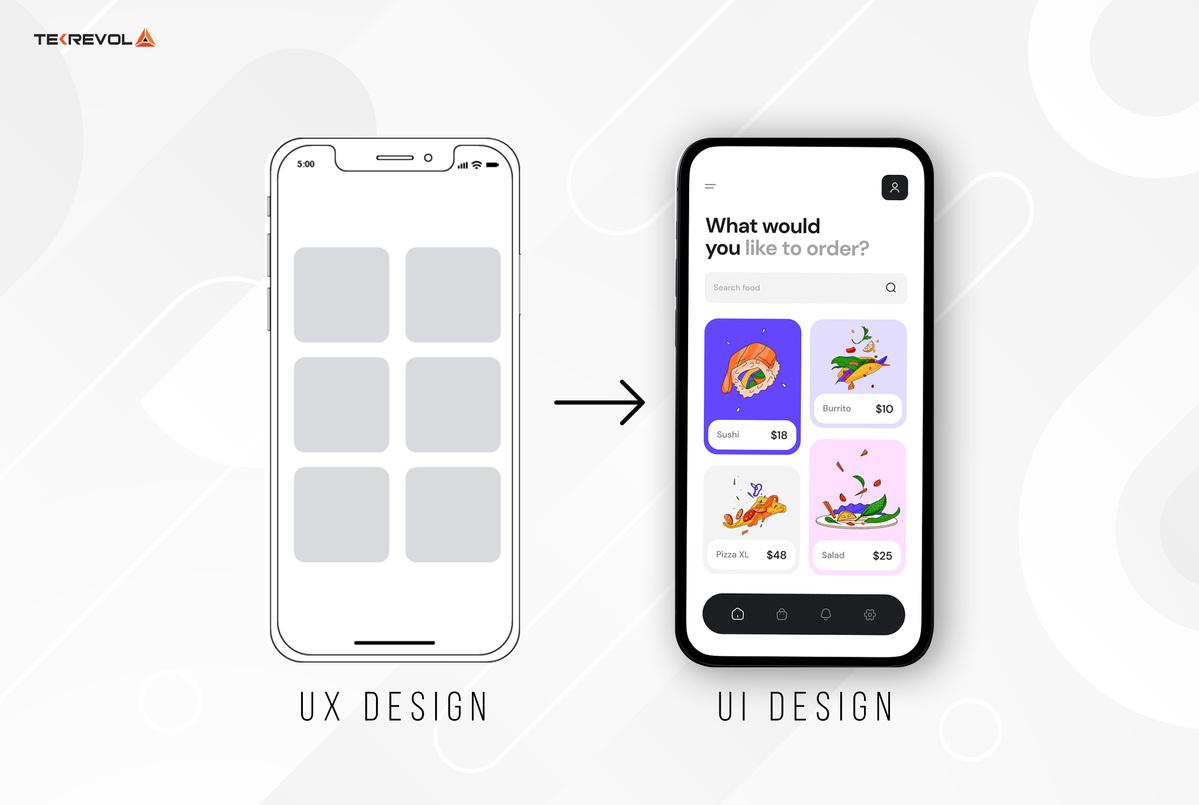In today’s digital landscape, having a strong online presence isn’t just an option; it’s a necessity for any business aiming to thrive. If you’ve ever wondered how to turn your website into a powerful tool that drives results—whether that means attracting new customers, generating leads, or boosting sales—you’re in the right place! Building a business website might seem daunting, but it doesn’t have to be. With the right approach, your website can become a dynamic platform that engages visitors and converts them into loyal clients. In this article, we’ll walk you through the essential steps to create a captivating and effective business website, packed with tips and tricks to ensure you stand out in a crowded marketplace. Let’s dive in and transform your online presence into a results-driven powerhouse!
Choosing the Right Platform for Your Business Website Success
Choosing the right platform for your business website is crucial in determining your online success. With numerous options available, it’s essential to evaluate each platform based on your business needs, technical expertise, and growth potential. Here are some key factors to consider:
- User-Friendliness: Look for a platform that offers intuitive navigation and easy-to-use tools. This will save you time and reduce frustration, allowing you to focus on building your brand.
- Customization Options: Your website should reflect your unique brand identity. Choose a platform that allows for customization in templates, layouts, and features to ensure your site stands out.
- Scalability: As your business grows, your website should be able to grow with it. Opt for a platform that offers scalable solutions to accommodate increasing traffic and expanding functionalities.
- SEO Friendliness: A website that ranks well on search engines is vital for visibility. Ensure the platform you choose has robust SEO features to help improve your online presence.
- Support and Community: Reliable customer support and a strong user community can be invaluable, especially when you encounter technical issues or need advice on best practices.
To help you visualize your options, here’s a quick comparison table of some popular website platforms:
| Platform | User-Friendly | Customization | SEO Features | Cost |
|---|---|---|---|---|
| WordPress | High | Extensive | Robust | Free – $500+/year |
| Wix | Very High | Moderate | Good | $14 – $49/month |
| Squarespace | High | Moderate | Good | $12 – $40/month |
| Shopify | High | Moderate | Very Good | $29 – $299/month |
Ultimately, the right platform for your business should not only meet your immediate needs but also align with your long-term goals. Take your time to explore each option, considering the features that matter most to you. Your website will be the digital storefront of your brand—make sure it’s built on a foundation that supports your vision and drives results.

Crafting a Compelling Visual Identity That Captivates Visitors
Creating a visual identity that resonates with your visitors is essential for establishing trust and keeping them engaged. Your website’s design elements—like colors, fonts, and imagery—should reflect your brand’s personality while also creating a sense of cohesion and clarity. Here are some strategies to ensure your visual identity captivates and retains attention:
- Color Psychology: Choose a color palette that aligns with your brand’s message. For example, blue often conveys trust and dependability, while red can evoke excitement and urgency.
- Typography: Select fonts that are easy to read and reflect your brand’s character. A playful font might suit a creative business, while a sleek, modern font may be better for a tech company.
- Imagery: Use high-quality images that tell a story about your brand. Authentic visuals can forge a deeper connection with your audience than stock photos.
Consistency is key in your visual identity. Use the same colors, fonts, and styles throughout your website to build familiarity and trust. This unifying theme not only enhances aesthetic appeal but also aids in brand recall. Here’s a simple table to illustrate how consistency in visual identity can impact user experience:
| Element | Consistent Usage | Inconsistent Usage |
|---|---|---|
| Color Scheme | Creates a cohesive look | Confuses visitors |
| Fonts | Enhances readability | Distracts and frustrates |
| Imagery | Strengthens brand narrative | Weakens brand identity |
Moreover, consider the layout of your website. A well-organized page with clear sections can guide visitors through your content seamlessly. Use visual hierarchy to lead the eye to key information, such as calls-to-action or unique selling propositions. This not only improves the user experience but can also significantly increase conversion rates.
don’t underestimate the power of responsive design. With an increasing number of users accessing websites via mobile devices, ensuring your visual identity adapts to different screens is crucial. A mobile-friendly design maintains your brand’s integrity and ensures a consistent experience, regardless of the device being used.
Essential Elements Every High-Performing Business Website Needs
Creating a high-performing business website requires more than just aesthetic appeal; it demands a thoughtful blend of functionality, user experience, and strategic content. To truly drive results, your website should incorporate several essential elements that not only attract visitors but also convert them into loyal customers.
Responsive Design is non-negotiable. With a growing number of users accessing the internet via mobile devices, your website must look and function flawlessly across all screen sizes. A responsive design enhances user experience, increases dwell time, and ultimately boosts your SEO rankings. Ensure that your site adapts seamlessly from desktops to smartphones, providing an optimal browsing experience no matter the device.
Clear Call-to-Actions (CTAs) are crucial in guiding your visitors toward desired actions. Use compelling language and strategic placement to encourage users to take steps, whether that’s signing up for a newsletter, downloading a resource, or making a purchase. Consider integrating a variety of CTAs throughout your site to cater to different stages of the customer journey. For example:
| Stage of Journey | CTA Example |
|---|---|
| Awareness | Download Our Free Guide |
| Consideration | Schedule a Free Consultation |
| Decision | Get 20% Off Your First Purchase |
Another pivotal aspect is SEO Optimization. Without proper optimization, even the best-designed website will struggle to attract traffic. Focus on keyword research, on-page SEO best practices, and high-quality content that addresses your audience’s needs. Remember to optimize your images, meta tags, and URLs for search engines while ensuring that the content remains engaging for human readers.
Fast Load Times cannot be overlooked. Studies show that users abandon sites that take longer than three seconds to load. Optimize images, leverage browser caching, and minimize HTTP requests to enhance speed. A fast-loading website not only improves user experience but also has a positive impact on your SEO performance, driving higher search rankings and more organic traffic.
Creating Engaging Content That Converts Visitors into Customers
Craft Your Message with Precision
Creating content that captures attention is about more than just SEO keywords; it’s about telling a story that resonates with your audience. Start by understanding your target market. Develop customer personas that outline their needs, pain points, and what drives their purchasing decisions. This insight will help you tailor your message to speak directly to their desires and concerns.
Utilize Compelling Visuals
Images, infographics, and videos can significantly elevate your content. Consider incorporating the following elements:
- High-quality images: Use visuals that reflect your brand and evoke emotion.
- Infographics: These can simplify complex information and make it more digestible.
- Videos: Short, engaging videos can keep visitors on your site longer.
Incorporate Strong Calls to Action
Every piece of content should have a clear objective, whether it’s to inform, persuade, or convert. A well-placed call to action (CTA) can guide your visitors toward the next step in their buying journey. Use action-oriented language that creates urgency, like:
| CTA Example | Purpose |
|---|---|
| Get Started Today! | Encourages immediate action |
| Join Our Newsletter! | Builds a subscriber base |
| Shop Now! | Directs to product pages |
Leverage User-Generated Content
Encourage your customers to share their experiences with your products. User-generated content not only builds trust but also fosters community. Showcase testimonials, reviews, and even social media posts from satisfied customers. This can significantly enhance credibility and persuade potential buyers to take the plunge.
Regularly Update Your Content
Content that remains stagnant can quickly lose relevance. Regular updates not only keep your audience engaged but also signal to search engines that your site is active. Consider establishing a content calendar to plan your posts, ensuring a consistent flow of fresh content that reflects current trends and addresses your audience’s ongoing needs.
Optimizing for Mobile Users: Why It Matters More than Ever
In today’s digital landscape, optimizing your business website for mobile users is no longer just an option; it’s a necessity. With more than 50% of global web traffic coming from mobile devices, your site must cater to this audience to stay competitive. Ignoring mobile optimization can lead to significant loss of potential customers and engagement.
When designing for mobile, consider the following crucial elements:
- Responsive Design: Ensure your website adapts seamlessly to different screen sizes. This enhances user experience and keeps visitors on your site longer.
- Loading Speed: Mobile users are often on the go and expect fast loading times. Aim for a load time under three seconds to reduce bounce rates.
- Easy Navigation: Simplify your navigation. Use larger buttons and clear menus to make it easy for users to find what they’re looking for without frustration.
- Readable Content: Choose legible fonts and appropriate text sizes to ensure that your content is easy to read without zooming in.
Furthermore, it’s essential to understand the behavior of mobile users. They often seek quick information and prefer concise content. Tailor your messaging to be direct and engaging, utilizing bullet points and short paragraphs to convey your message effectively. A mobile-optimized website should feel intuitive and welcoming, making it easy for users to take action.
| Mobile Optimization Strategy | Impact on User Experience |
|---|---|
| Responsive Design | Enhances accessibility across devices |
| Fast Loading Speed | Reduces bounce rates and increases engagement |
| Simplified Navigation | Makes it easy to find key information |
| Concise Content | Improves readability and comprehension |
don’t forget about the importance of mobile SEO. Google prioritizes mobile-friendly sites in its rankings, meaning that an optimized mobile experience can help your business climb the search engine results. By focusing on mobile optimization, you not only enhance user experience but also boost your visibility and credibility in a heavily saturated market.
Mastering SEO Techniques to Boost Your Website’s Visibility
To enhance your website’s visibility, mastering SEO techniques is essential. A well-optimized website not only attracts more visitors but also converts them into loyal customers. Here are some strategies to elevate your online presence:
- Keyword Research: Identify the phrases and terms your target audience uses when searching for products or services similar to yours. Utilize tools like Google Keyword Planner or SEMrush to find high-traffic keywords.
- On-Page SEO: Optimize your content with relevant keywords, ensuring they appear naturally throughout your text. Pay special attention to your title tags, meta descriptions, and header tags.
- Quality Content Creation: Develop engaging and informative content that addresses your audience’s needs. Aim for value over quantity, as search engines favor high-quality content.
- Mobile Optimization: Ensure your website is mobile-friendly, as more users are browsing on their smartphones. A responsive design improves user experience and can positively impact your rankings.
- Backlink Building: Establish high-quality backlinks from reputable sites. This not only drives traffic but also signals to search engines that your website is trustworthy.
Implementing these techniques requires consistency and patience, but the results can be transformative. To measure the effectiveness of your SEO efforts, consider tracking key performance indicators (KPIs) such as organic traffic, bounce rate, and conversion rate.
| SEO Technique | Benefit |
|---|---|
| Keyword Research | Identifies audience search patterns |
| On-Page SEO | Improves site relevancy |
| Quality Content | Engages and informs visitors |
| Mobile Optimization | Enhances user experience |
| Backlink Building | Boosts authority and traffic |
By dedicating time to these SEO strategies, you will not only enhance your website’s visibility but also create a sustainable growth model for your business. Remember, the digital landscape is ever-evolving, so staying informed about the latest trends and algorithm updates is key to maintaining your site’s performance.

Leveraging Analytics to Drive Continuous Improvement
In today’s digital landscape, data is more than just numbers; it’s the heartbeat of your business strategy. To truly harness the power of your website, it’s essential to delve deep into analytics. By analyzing user behavior, traffic patterns, and conversion rates, you can identify what’s working and what isn’t, enabling you to make informed decisions that fuel your website’s growth.
Start by setting clear, measurable goals for your website. Whether it’s increasing sales, generating leads, or enhancing user engagement, defining these objectives will guide your analytics efforts. Utilize tools like Google Analytics to track key performance indicators (KPIs) such as:
- Page Views: Understand which pages attract the most visitors.
- Bounce Rate: Assess how many users leave without engaging.
- Conversion Rate: Measure the effectiveness of your calls-to-action.
Once you have a firm grasp on your data, the next step is to analyze it regularly. Schedule monthly reviews to assess your website’s performance and pinpoint areas for improvement. Don’t just rely on surface-level insights; dig deeper to uncover trends and patterns. For example, if you notice a high bounce rate on certain pages, it may be time to reconsider the content or layout. A/B testing can also be invaluable here, allowing you to experiment with different versions of your site to see what resonates best with your audience.
Implementing changes based on analytics can lead to significant improvements in user experience and overall site performance. Consider creating a simple action plan based on your findings:
| Analysis Area | Action Plan |
|---|---|
| High Bounce Rate | Revise content and improve page load speed. |
| Low Conversion Rate | Enhance CTAs and simplify navigation. |
| High Traffic but Low Engagement | Incorporate interactive elements like polls or quizzes. |
By consistently leveraging analytics, you can create a cycle of continuous improvement, where each iteration of your website is more effective than the last. Remember, it’s not just about gathering data; it’s about interpreting that data and taking actionable steps to enhance your website’s performance. a data-driven approach will not only help you meet your business goals but also foster a better experience for your visitors.

Building Trust with Effective Customer Testimonials and Reviews
In an online landscape where skepticism is rampant, customer testimonials and reviews serve as powerful tools for building trust. They provide potential clients with insight into the experiences of others, making your business feel more relatable and transparent. By showcasing authentic feedback, you demonstrate confidence in your products or services, inviting new customers to take that crucial step toward engagement.
To effectively harness the power of testimonials, consider the following strategies:
- Choose Authentic Voices: Select testimonials that reflect genuine experiences. Look for customers who have faced challenges and how your service helped them overcome these.
- Diversify Your Testimonials: Include a variety of reviews from different demographics, showcasing how your products benefit various clientele.
- Highlight Specific Results: When possible, incorporate measurable outcomes that your customers achieved through your offerings, such as increased sales or improved satisfaction.
- Use Engaging Formats: Mix written testimonials with video reviews or social media shout-outs. Visual content can enhance relatability and engagement.
Displaying testimonials prominently on your website can significantly influence new visitors. A strategically placed testimonial section can act as social proof, reassuring potential customers of the quality they can expect. Consider placing these reviews in key areas:
| Location | Reason |
|---|---|
| Home Page | To capture immediate attention and establish credibility. |
| Product Pages | To reinforce trust and encourage purchase decisions. |
| Checkout Page | To alleviate last-minute hesitations and boost conversion rates. |
Encourage customers to leave feedback by simplifying the process. Use follow-up emails after purchases or service completions, including direct links to review platforms. Offering incentives, like discounts or exclusive content, can also motivate customers to share their positive experiences.
Lastly, engage with both positive and negative reviews. Thank customers for their positive feedback and address any concerns raised in negative reviews promptly and professionally. This not only shows that you value customer opinions but also highlights your commitment to improvement and customer satisfaction, further building trust in your brand.

Integrating Social Media for Enhanced Engagement and Reach
In today’s digital landscape, integrating social media into your business website is essential for maximizing your audience engagement and expanding your reach. By creating seamless connections between your website and social media platforms, you can drive traffic, encourage interaction, and ultimately boost conversions. Here’s how to effectively weave social media into the fabric of your website.
First and foremost, include social sharing buttons prominently on your pages. This makes it easy for visitors to share your content across their networks, amplifying your reach without additional effort on your part. Consider placing these buttons at the top and bottom of your blog posts, as well as on product pages to encourage shares. Popular options include:
Next, enhance your website with a live social media feed. This dynamic element allows visitors to view your latest posts in real-time, keeping them engaged and encouraging them to follow your social profiles. Using plugins or widgets, you can easily embed your Twitter feed, Instagram photos, or Facebook updates directly onto your site, providing fresh content that changes frequently.
Another effective strategy is to promote user-generated content. Encourage your customers to share their experiences on social media and tag your brand. By showcasing this content on your website—such as testimonials, photos, or videos—you not only provide social proof but also foster a sense of community. Create a dedicated section or gallery that displays this user-generated content, motivating others to join the conversation.
don’t underestimate the power of social media campaigns that drive traffic back to your site. Use your social media accounts to announce special promotions, new blog posts, or events. Consider creating visually appealing graphics to accompany these posts, ensuring they catch your audience’s attention as they scroll through their feeds. A well-crafted campaign can create buzz and direct significant traffic to your website.
| Social Media Platform | Best For |
|---|---|
| Community building and event promotion | |
| Visual storytelling and brand aesthetics | |
| Real-time updates and customer interaction | |
| Professional networking and B2B engagement |

Ensuring a Seamless User Experience That Keeps Visitors Coming Back
Creating a website that captivates and retains visitors is an essential part of driving business success. To do this, consider focusing on multiple key elements that enhance the overall experience. Here are some crucial aspects to keep in mind:
- Responsive Design: Ensure your website adapts seamlessly to different devices and screen sizes. A mobile-friendly layout is no longer optional; it’s a necessity.
- Fast Loading Times: Optimize your website’s speed. Research shows that users will abandon a site that takes longer than three seconds to load.
- Intuitive Navigation: Make it easy for users to find what they need. A well-structured menu, clear calls-to-action, and a logical flow can significantly enhance usability.
- Engaging Content: Keep your visitors interested with high-quality, relevant content that addresses their needs and interests. Use visuals, infographics, and videos to break up text and maintain engagement.
- Consistent Branding: Your website should reflect your brand’s identity consistently across all pages. Use a cohesive color palette, typography, and imagery to reinforce your brand message.
Additionally, consider implementing user feedback mechanisms. Tools like surveys or feedback forms can provide valuable insights into user preferences and pain points. This allows you to continuously improve your site based on real user experiences.
Here’s a simple overview of elements that contribute to a seamless user experience:
| Element | Importance | Tips |
|---|---|---|
| Responsive Design | Critical for mobile users | Test on multiple devices |
| Fast Loading Times | Reduces bounce rates | Optimize images and scripts |
| Intuitive Navigation | Enhances user satisfaction | Limit menu items; use breadcrumbs |
| Engaging Content | Increases time on site | Regularly update with fresh material |
| Consistent Branding | Builds trust | Maintain design elements across pages |
Ultimately, a website that’s easy to navigate, visually appealing, and rich in valuable content will keep visitors coming back for more. By prioritizing these elements, you’ll not only enhance the user experience but also establish a loyal audience eager to engage with your brand.
Frequently Asked Questions (FAQ)
Q&A: How to Build a Business Website That Drives Results
Q: Why is having a business website important?
A: In today’s digital age, your website is often the first point of contact potential customers have with your business. A well-designed website not only establishes credibility but also serves as a powerful marketing tool that can drive sales and generate leads. In fact, 75% of consumers admit to making judgments on a company’s credibility based on their website design. So, if you want to make a great first impression and convert visitors into customers, a professional website is essential!
Q: What are the key elements of a successful business website?
A: Great question! A successful business website should have a few key elements:
- User-Friendly Design: Easy navigation keeps visitors engaged and encourages them to explore more.
- Responsive Layout: With the rise of mobile browsing, your website must look great and function well on all devices.
- Compelling Content: Engaging, informative, and relevant content not only attracts visitors but also keeps them coming back.
- Clear Call-to-Action (CTA): Each page should guide visitors towards the next step, whether that’s making a purchase, signing up for a newsletter, or contacting you for more information.
- SEO Optimization: Incorporating relevant keywords improves your visibility on search engines, making it easier for potential customers to find you.
Q: How do I ensure my website stands out from the competition?
A: To make your website pop, focus on your unique selling proposition (USP). What makes your business different? Highlight that in your content and design. Use high-quality images, engaging videos, and a consistent brand voice to create a memorable experience. Additionally, consider incorporating customer testimonials or case studies to build trust and showcase your success stories.
Q: What role does content play in driving results?
A: Content is king! High-quality content not only boosts your SEO but also positions you as an authority in your industry. Regularly updated blogs, articles, and resources can drive organic traffic to your site. Plus, engaging content encourages visitors to interact with your brand, share your content, and convert into customers. Remember, the more valuable the content, the more likely visitors are to return.
Q: How often should I update my website?
A: Regular updates are key to keeping your website fresh and relevant! Aim to review and update your content at least every few months. This includes refreshing outdated information, adding new blog posts, and updating your portfolio or case studies. Not only does this improve user experience, but it also signals to search engines that your site is active, which can help with your SEO rankings.
Q: What are some common mistakes to avoid when building a business website?
A: Absolutely! Here are a few common pitfalls to steer clear of:
- Neglecting Mobile Users: With over half of web traffic coming from mobile devices, ignoring mobile optimization can turn away a huge audience.
- Overloading with Information: Keep your content concise and relevant. Too much information can overwhelm visitors and lead to confusion.
- Ignoring Analytics: Without tracking website performance, you won’t know what’s working and what isn’t. Use tools like Google Analytics to monitor visitor behavior and adjust your strategies accordingly.
- Skipping a Clear About Us Page: Don’t underestimate the power of storytelling! An engaging “About Us” page can help build an emotional connection with your audience.
Q: How can I measure the success of my business website?
A: Great question! Success can be measured through various metrics, including:
- Traffic: How many visitors are coming to your site?
- Conversion Rate: What percentage of those visitors are taking desired actions, like making a purchase or signing up for a newsletter?
- Bounce Rate: Are visitors leaving your site quickly? A high bounce rate may indicate that your content isn’t engaging enough.
- Time on Page: The longer visitors stay on your site, the better! This usually indicates that your content is resonating with them.
Using analytics tools, you can track these metrics and make data-driven decisions to enhance your website’s performance.
Building a business website that drives results is an ongoing process, but with the right strategy and tools, you can create an online presence that not only attracts visitors but turns them into loyal customers. Ready to take the plunge? Let’s get started!
In Retrospect
As we wrap up our journey into the world of building a business website that truly drives results, it’s clear that your online presence is more than just a digital storefront—it’s your business’s calling card, a hub for engagement, and a powerful tool for conversion. Remember, every element of your site, from the design to the content, plays a vital role in capturing your audience’s attention and guiding them to take action.
Now that you have the insights and strategies at your fingertips, it’s time to roll up your sleeves and put them into action. Don’t be afraid to experiment, learn from your analytics, and iterate on your design and content. Building a successful website is an ongoing process, and with each step forward, you’re getting closer to achieving your business goals.
So, whether you’re launching a new venture or revamping an existing site, embrace the challenge. Your website can be a powerhouse for driving results, increasing visibility, and ultimately, growing your business. If you have any questions or need further guidance, don’t hesitate to reach out. Let’s make your online vision a reality! Happy building!

